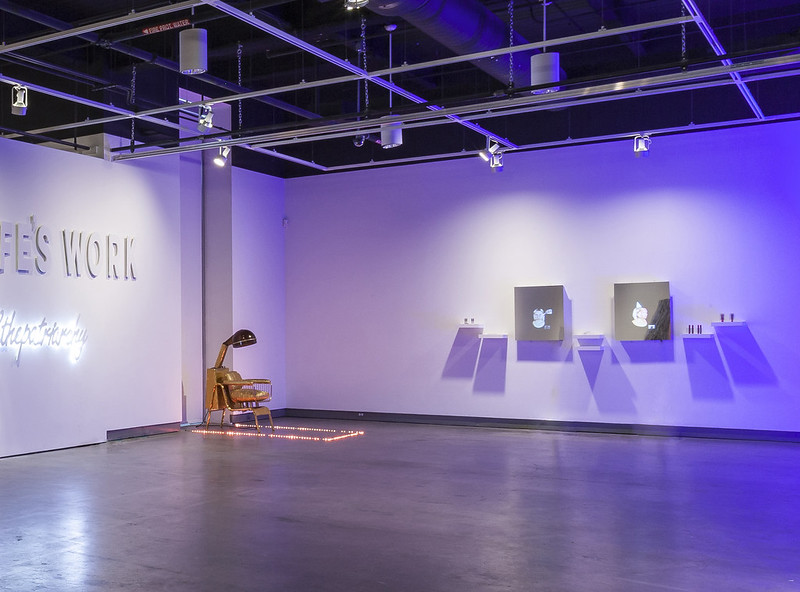Magic Erasure Correctives
Kevin Brophy (2017)
School of Art graduate student Kevin Brophy developed Magic Erasure Correctives, an interactive installation in which dystopian “smart mirrors” create a space of identification and reflection. The mirrors were a component of Brophy’s MFA thesis exhibition.
Magic Erasure Correctives is a multi-part interactive installation that includes two “smart mirrors,” which display generative texts and performative, abject and humorous videos. The videos presented on the two mirrors interact with one another at certain points during the presentation.
Magic Erasure Correctives by Kevin Brophy :: Supported by FRFAF (#2017-016) from STUDIO for Creative Inquiry on Vimeo.
Magic Erasure Correctives includes a variety of artist-manufactured and appropriated objects that are used outside their prescribed functions. These objects include products, games (for lack of a better word), and mystical objects. The compilation of video and text illuminate through the mirrored surface as a ‘manual’ for the art-objects. The viewer interacts with the art-objects in the ‘real’ space; they see themselves and the video in the mirror simultaneously, because the videos are shot with a black background and have isolated imagery. These pieces exist in the gallery space alongside product displays, a reactive wall hanging, and hairdryer chairs outfitted with Arduinos to activate audio and LED text displays when someone sits on them. Each piece uses various forms of language to point to the power of rhetoric.
Brophy writes: “I am interested in campy, amusement park-like aspects that can disarm a viewer; the idea of a series of parlor tricks that speak to larger issues; and the unexpected turns and satire that can exist in that psychologically constructed space. Without being too didactic: in a very base way the mirror aspect of this project both explicates and denies the Lacanian mirror stage wherein the self becomes aware and distinct from the other. The mirror like is a Foucauldian heterotopia; the text, image, and identification relate to semiotics; and the videos performed are informed by Judith Butler, Donna Haraway, and sociological analysis of dramaturgy.”



This project was made possible with the support of Microgrant #2017-016 from the Frank-Ratchye Fund for Art @ the Frontier. Additional images can be found here.
